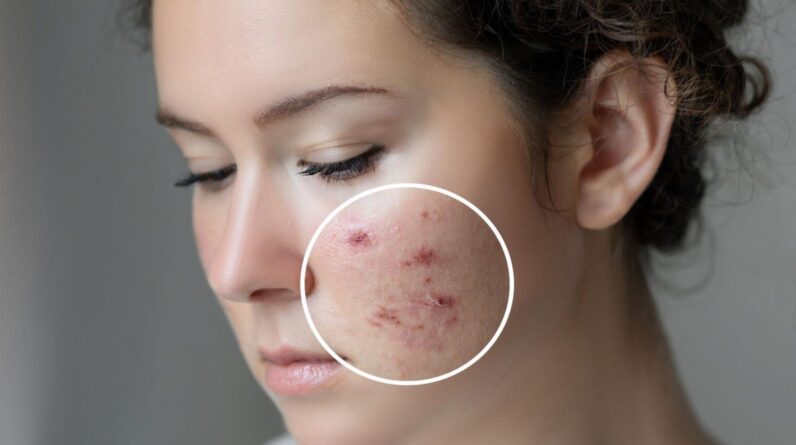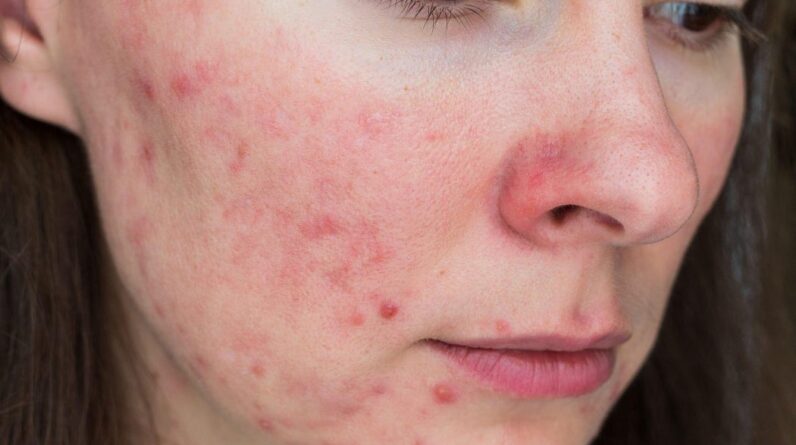
Acne is a common skin condition that affects millions of people worldwide. It can occur at any age, although it is most prevalent in teenagers and young adults. While acne is usually associated with puberty, it can also be caused by a variety of factors, including hormonal imbalances, genetics, lifestyle choices, and environmental factors. In this article, we will explore the different types of acne and their causes, with a particular focus on hormonal acne.
Understanding Acne: What Is It and What Causes It?
Acne is a skin condition that occurs when hair follicles become clogged with oil and dead skin cells. This can lead to the formation of blackheads, whiteheads, pimples, and cysts. The most common areas affected by acne are the face, neck, chest, back, and shoulders. Acne can range from mild to severe and can cause emotional distress, scarring, and even depression in some people.
Acne is caused by several factors, including excess sebum production, inflammation, bacterial overgrowth, and hormonal imbalances. Sebum is an oily substance produced by the sebaceous glands that lubricate and protect the skin. However, excess sebum production can lead to clogged pores and acne. Inflammation is a natural response of the body to injury or infection, but chronic inflammation can exacerbate acne symptoms. Bacterial overgrowth is another contributing factor to acne, as the bacteria feed on excess sebum and can cause further inflammation.
Hormonal imbalances, particularly the androgen hormones, are also a significant contributor to acne. Androgens are male hormones that are present in both men and women. In women, androgens are produced in the ovaries and adrenal glands, and they play a crucial role in the development of secondary sexual characteristics. However, when the levels of androgens in the body become imbalanced, they can cause an increase in sebum production and acne.
Different Types of Acne and How to Identify Them
Acne can manifest in various forms, each with its own set of symptoms and characteristics. Identifying the type of acne you have is crucial in determining the appropriate treatment plan. Below are some of the most common types of acne and how to identify them:
Whiteheads
Whiteheads are small, flesh-colored or white bumps that occur when hair follicles become clogged with oil and dead skin cells. They are typically found on the face, neck, chest, and back. Whiteheads are considered non-inflammatory acne and do not cause redness or inflammation.
Blackheads
Blackheads are similar to whiteheads but have a black or dark appearance due to the oxidation of melanin in the skin. They are also non-inflammatory acne and are typically found on the nose, chin, and forehead.
Papules
Papules are small, red bumps that are typically inflamed and sensitive to touch. They occur when hair follicles become inflamed due to excess oil and dead skin cells. Papules can be painful and can lead to scarring if left untreated.
Pustules
Pustules are similar to papules but contain pus in the center. They are typically filled with a yellow or white liquid and can be painful and inflamed. Pustules can also lead to scarring if not treated properly.
Cysts
Cysts are large, inflamed, and pus-filled lesions that occur when hair follicles become severely infected. They are typically deeper in the skin than other types of acne and can be very painful. Cysts can also lead to scarring if not treated properly.
Nodules
Nodules are hard, painful lumps that form under the skin and are caused by the buildup of bacteria, oil, and dead skin cells. They are typically larger than papules and pustules and can be difficult to treat.
Hormonal Acne
Hormonal acne is a type of acne that is caused by hormonal imbalances, particularly an increase in androgens. It typically occurs in women during their menstrual cycle, pregnancy, and menopause. Hormonal acne is usually characterized by deep, cystic acne on the lower face, chin, and jawline.
Identifying the type of acne you have can help you determine the most effective treatment plan. Mild acne can often be treated with over-the-counter topical treatments, such as benzoyl peroxide or salicylic acid. However, moderate to severe acne may require prescription medications, such as topical or oral antibiotics, retinoids, or hormonal therapies.
Hormonal Acne: Causes and Treatment Options
Hormonal acne is a particularly challenging form of acne to treat, as it is caused by hormonal imbalances that can be difficult to regulate. Hormonal imbalances can occur due to a variety of factors, including puberty, pregnancy, menopause, polycystic ovary syndrome (PCOS), and certain medications. In women, hormonal acne is typically characterized by deep, cystic acne on the lower face, chin, and jawline.
Treating hormonal acne usually requires a multi-faceted approach, as it often involves addressing the underlying hormonal imbalances and reducing inflammation in the skin. Some effective treatment options for hormonal acne include:
Hormonal therapies
Hormonal therapies, such as birth control pills or spironolactone, can help regulate androgen levels in the body and reduce acne symptoms.
Topical retinoids
Topical retinoids, such as tretinoin or adapalene, can help regulate sebum production and reduce inflammation in the skin.
Antibiotics
Oral or topical antibiotics can be used to reduce inflammation and kill bacteria that contribute to acne.
Diet and lifestyle changes
Making changes to your diet and lifestyle, such as reducing sugar and processed foods, exercising regularly, and managing stress, can help regulate hormone levels and reduce acne symptoms.
Skincare routine
Developing a consistent skincare routine that includes gentle cleansing, exfoliation, and moisturization can help prevent clogged pores and reduce acne symptoms.
It’s important to note that hormonal acne can take time to improve, and it may require a combination of treatments to see results. It’s also essential to work closely with a dermatologist to develop an effective treatment plan and monitor your progress.
Check out Acne Free Treatment Amazon
Conclusion
Acne is a common skin condition that can be caused by a variety of factors, including hormonal imbalances, genetics, lifestyle choices, and environmental factors. Identifying the type of acne you have is crucial in determining the appropriate treatment plan, as different types of acne require different approaches.
Hormonal acne, in particular, is a challenging form of acne to treat, as it is caused by hormonal imbalances that can be difficult to regulate. However, with a multi-faceted approach that includes hormonal therapies, topical retinoids, antibiotics, diet and lifestyle changes, and a consistent skincare routine, hormonal acne can be effectively managed.
If you are struggling with acne, it’s essential to seek professional help from a dermatologist who can provide you with a personalized treatment plan and monitor your progress. With the right approach and a little patience, you can achieve clearer, healthier skin and regain your confidence.



